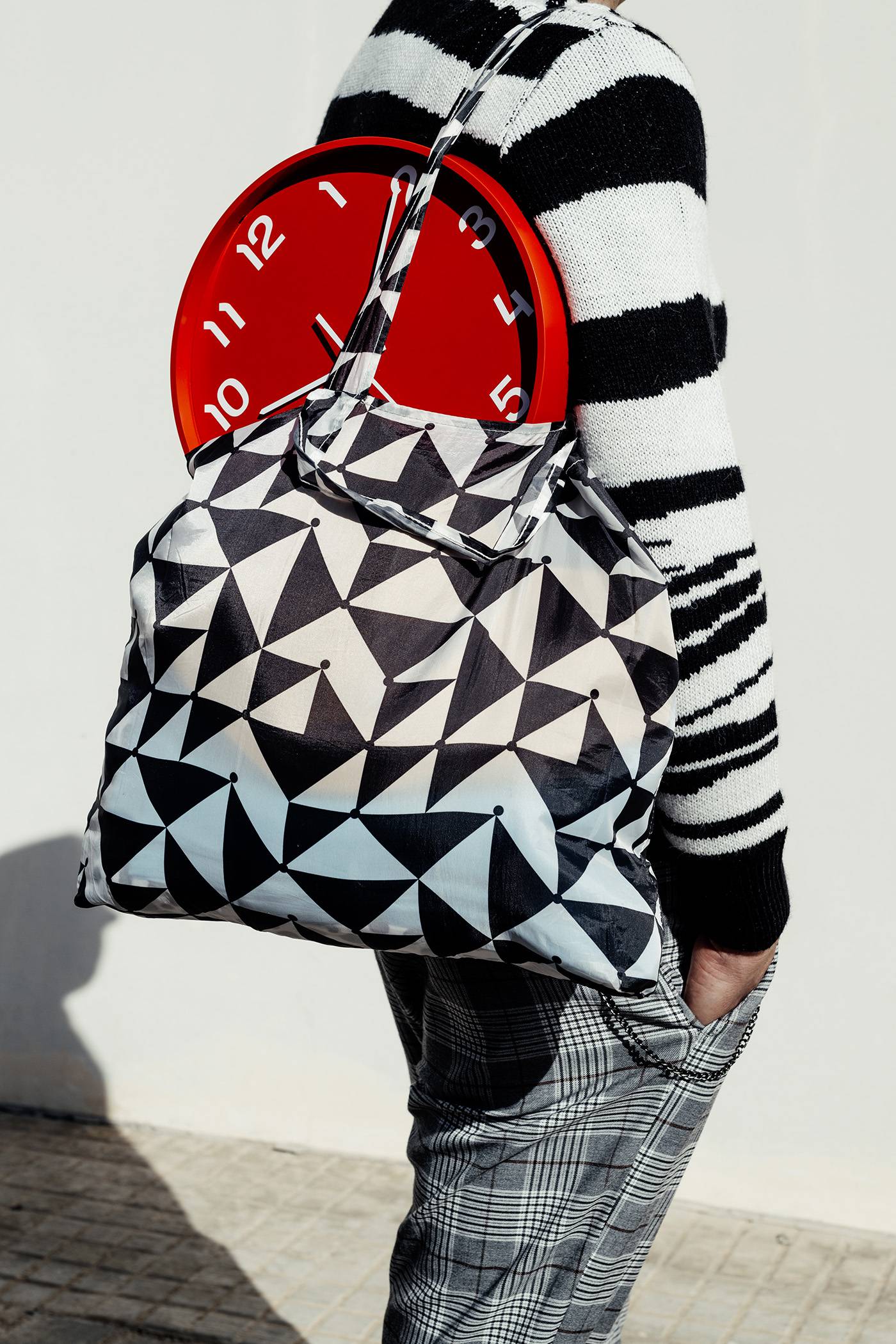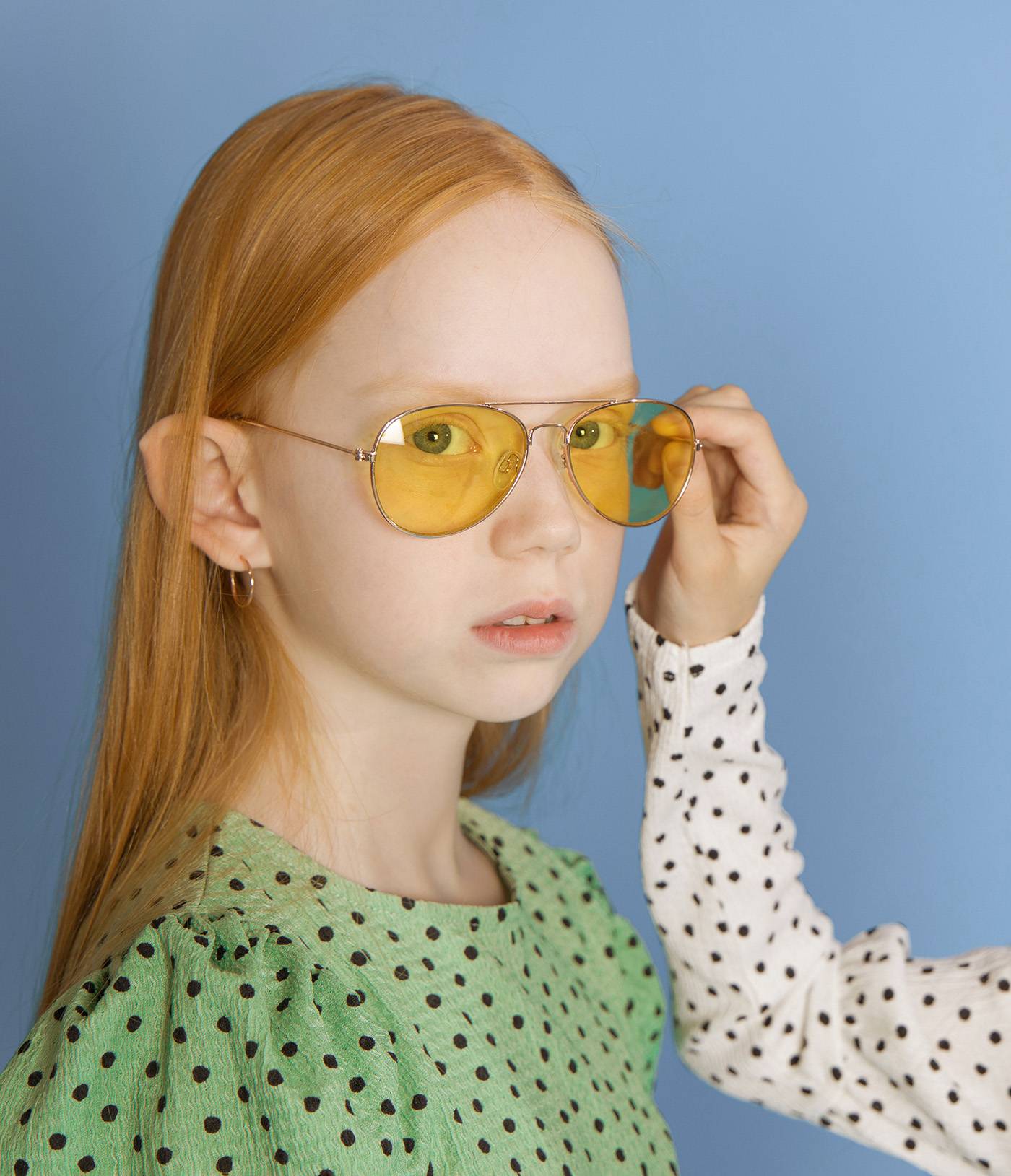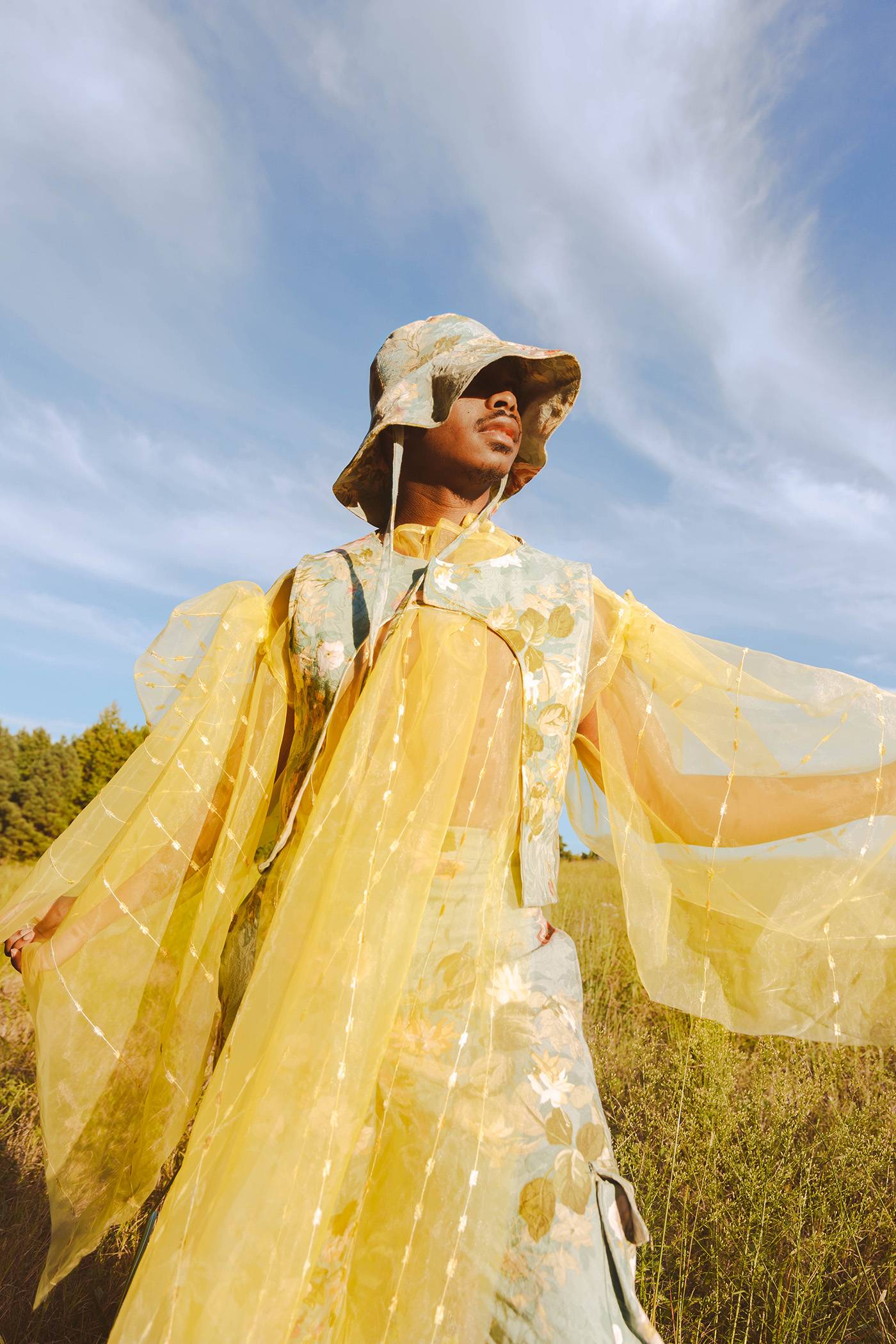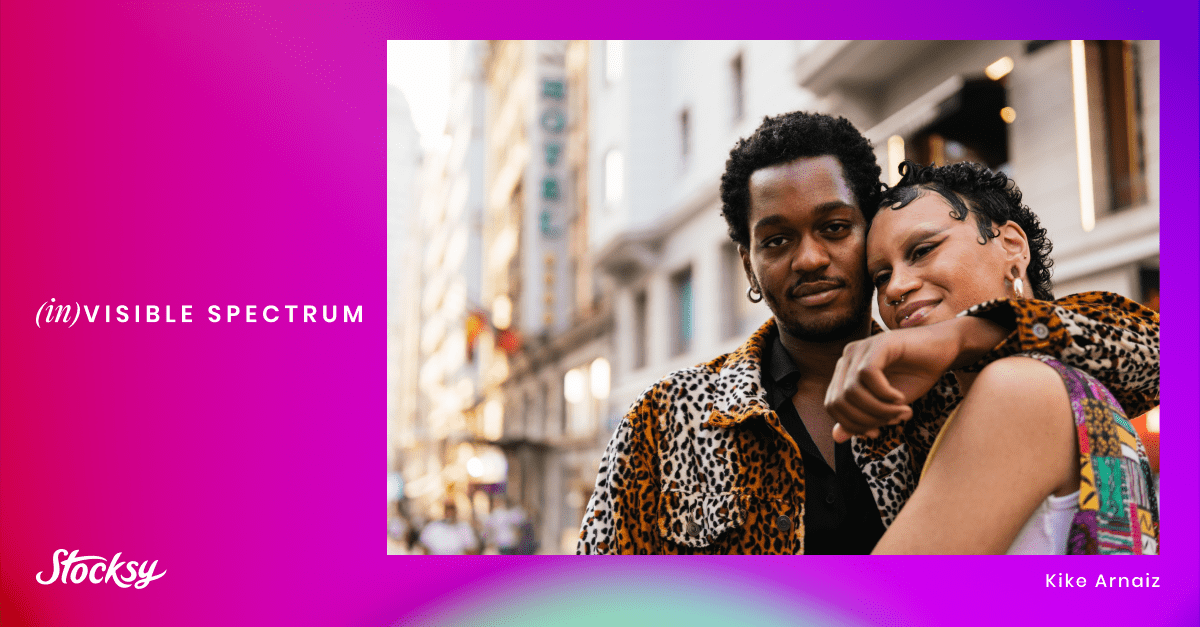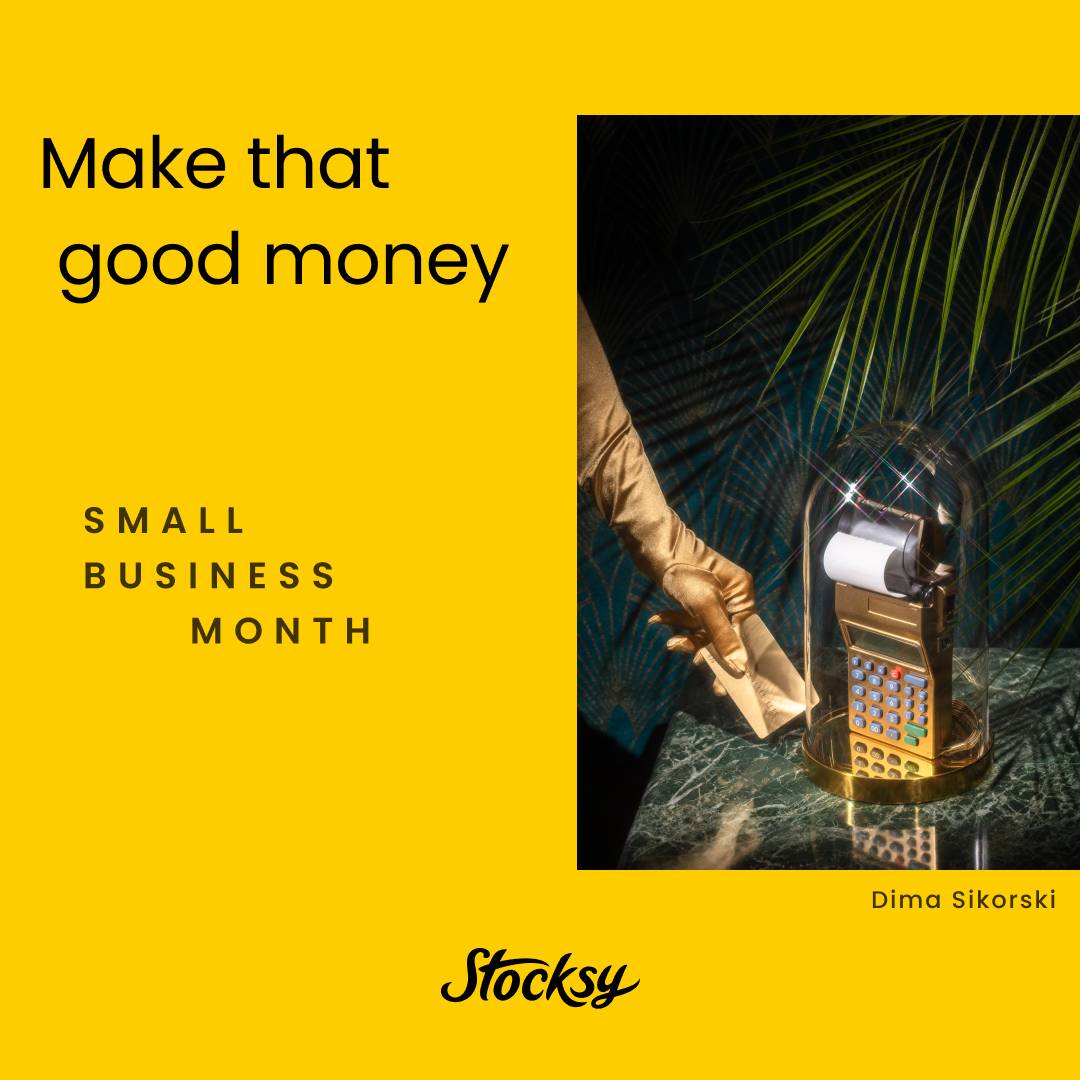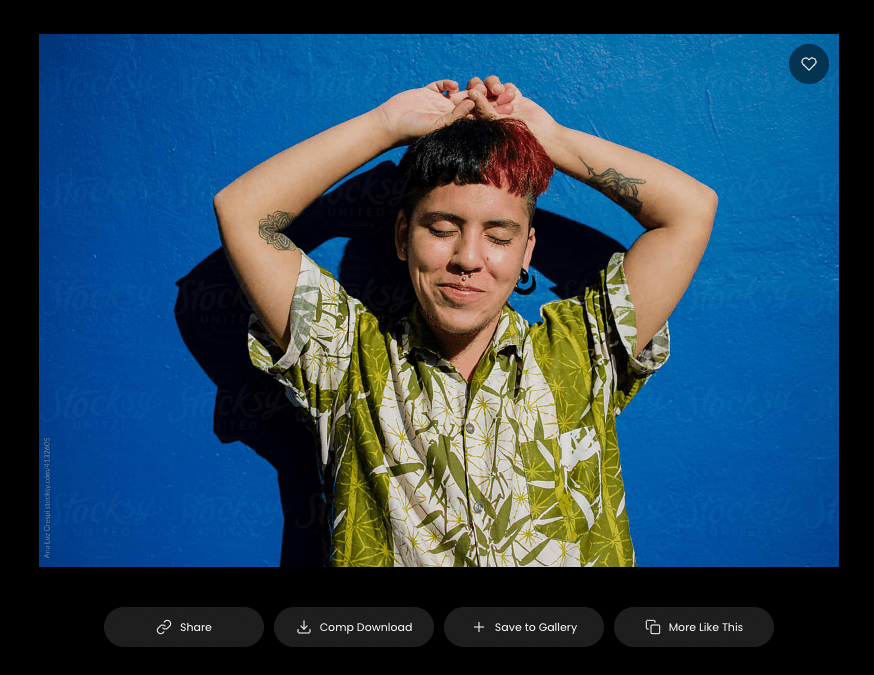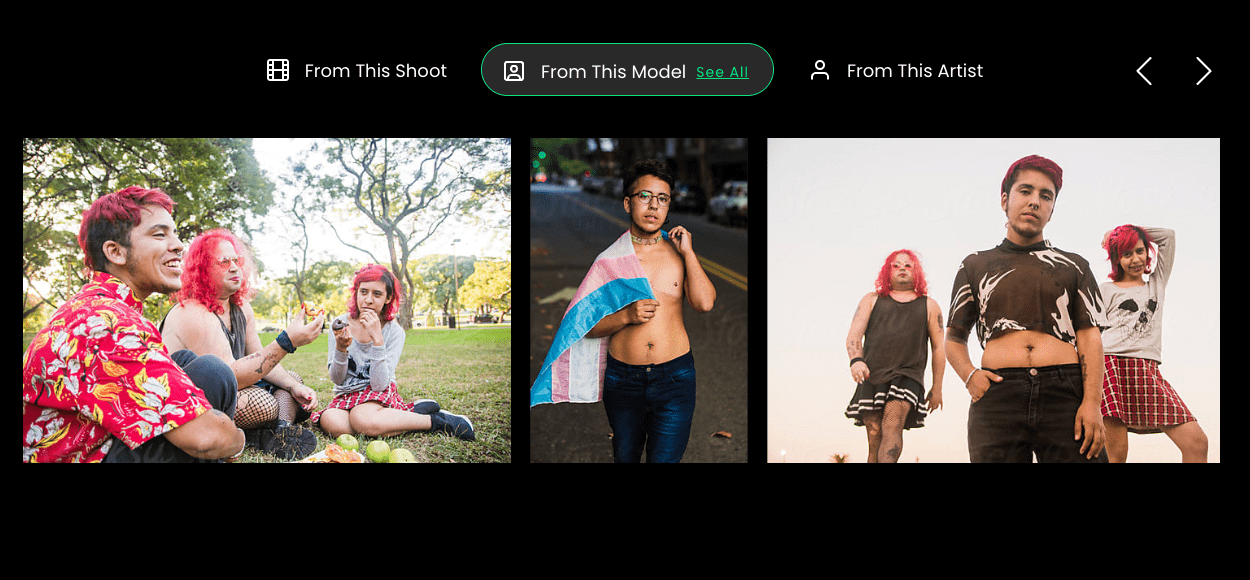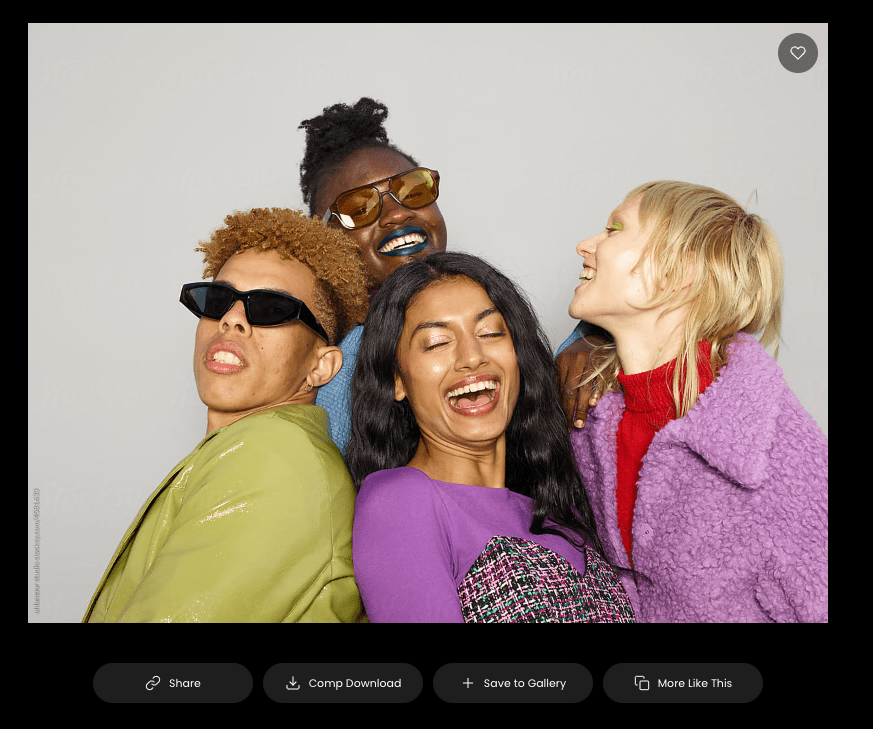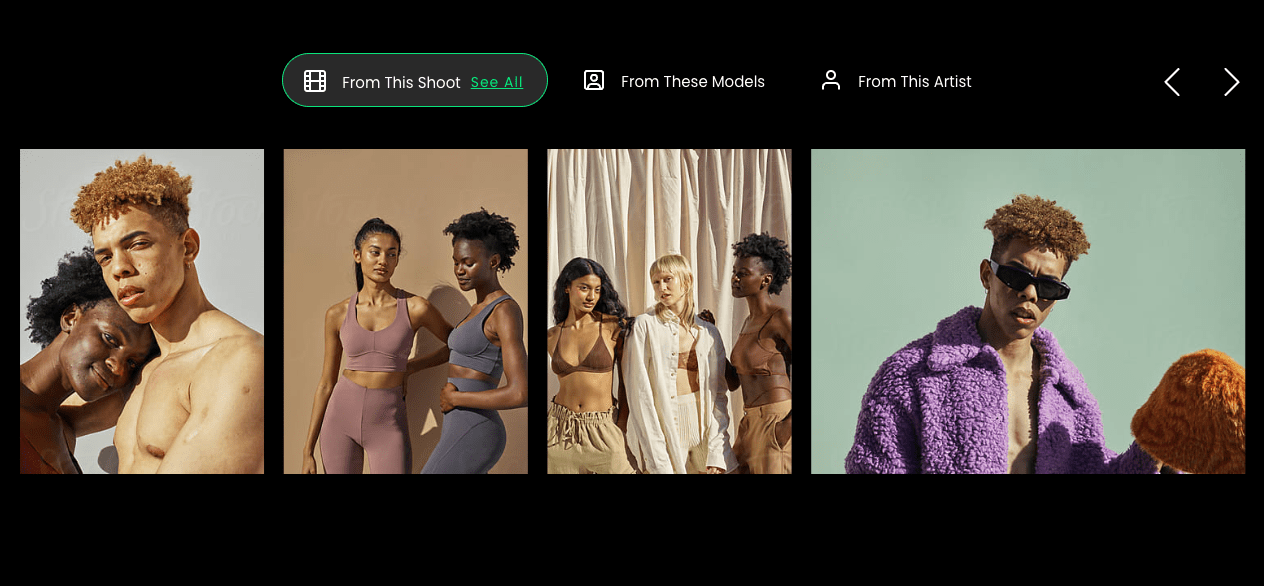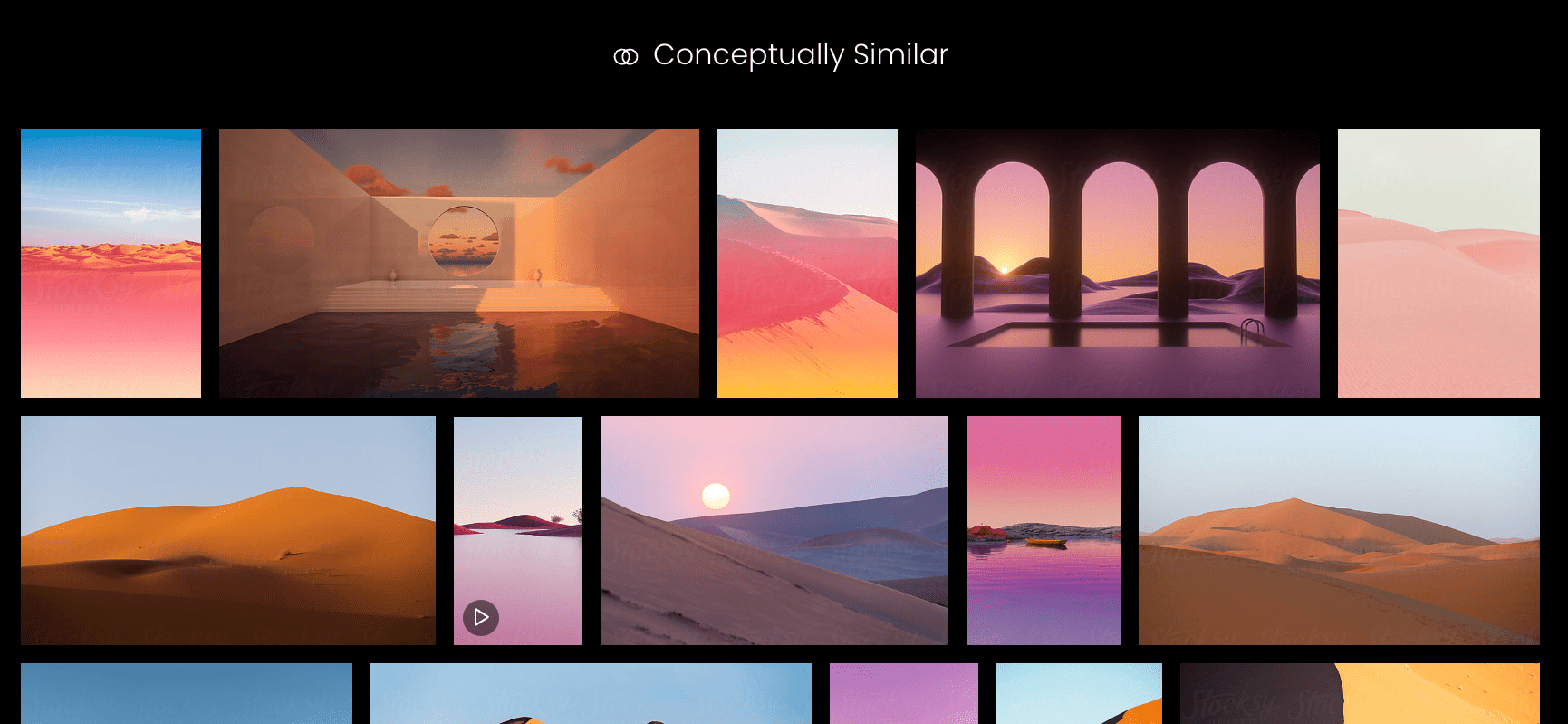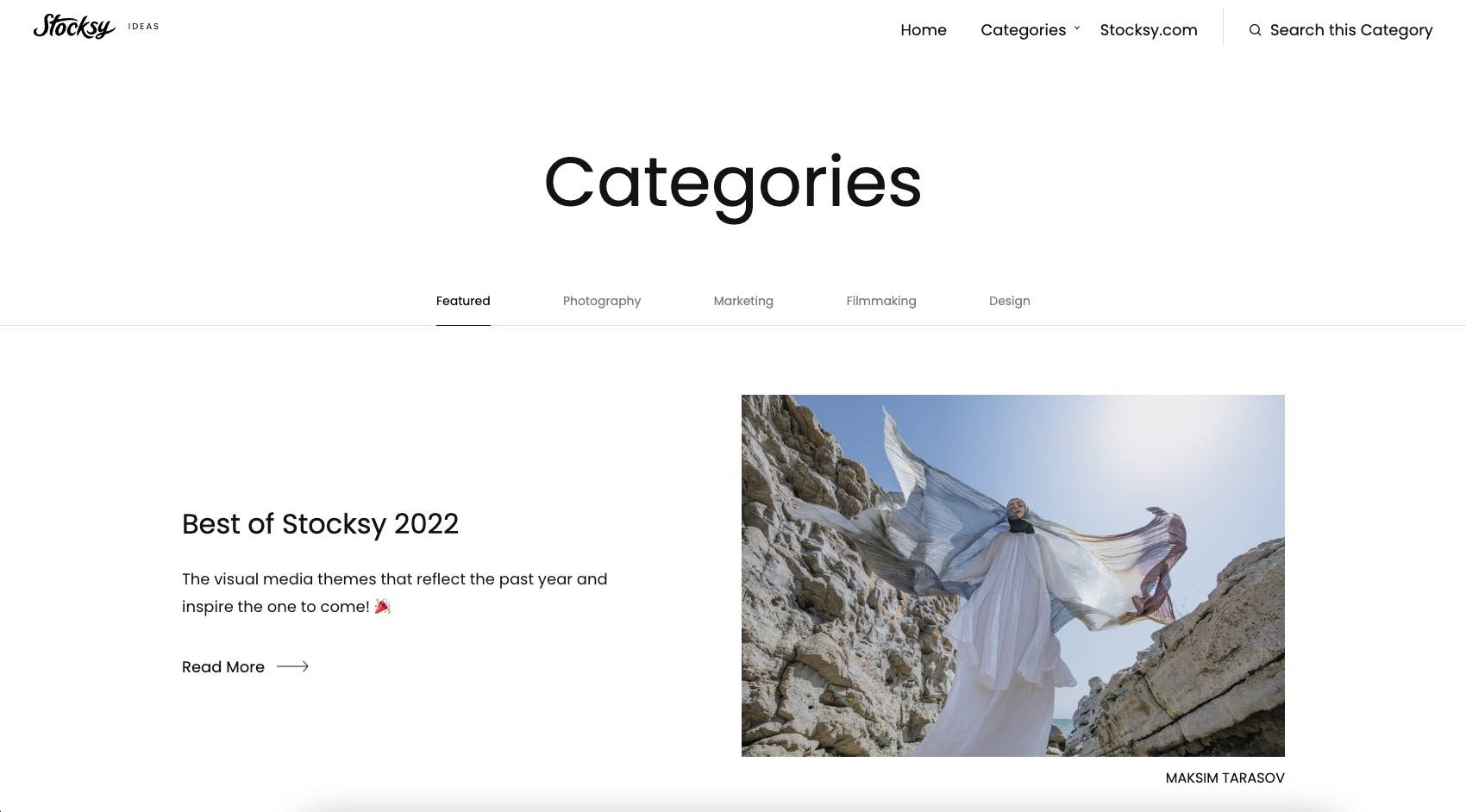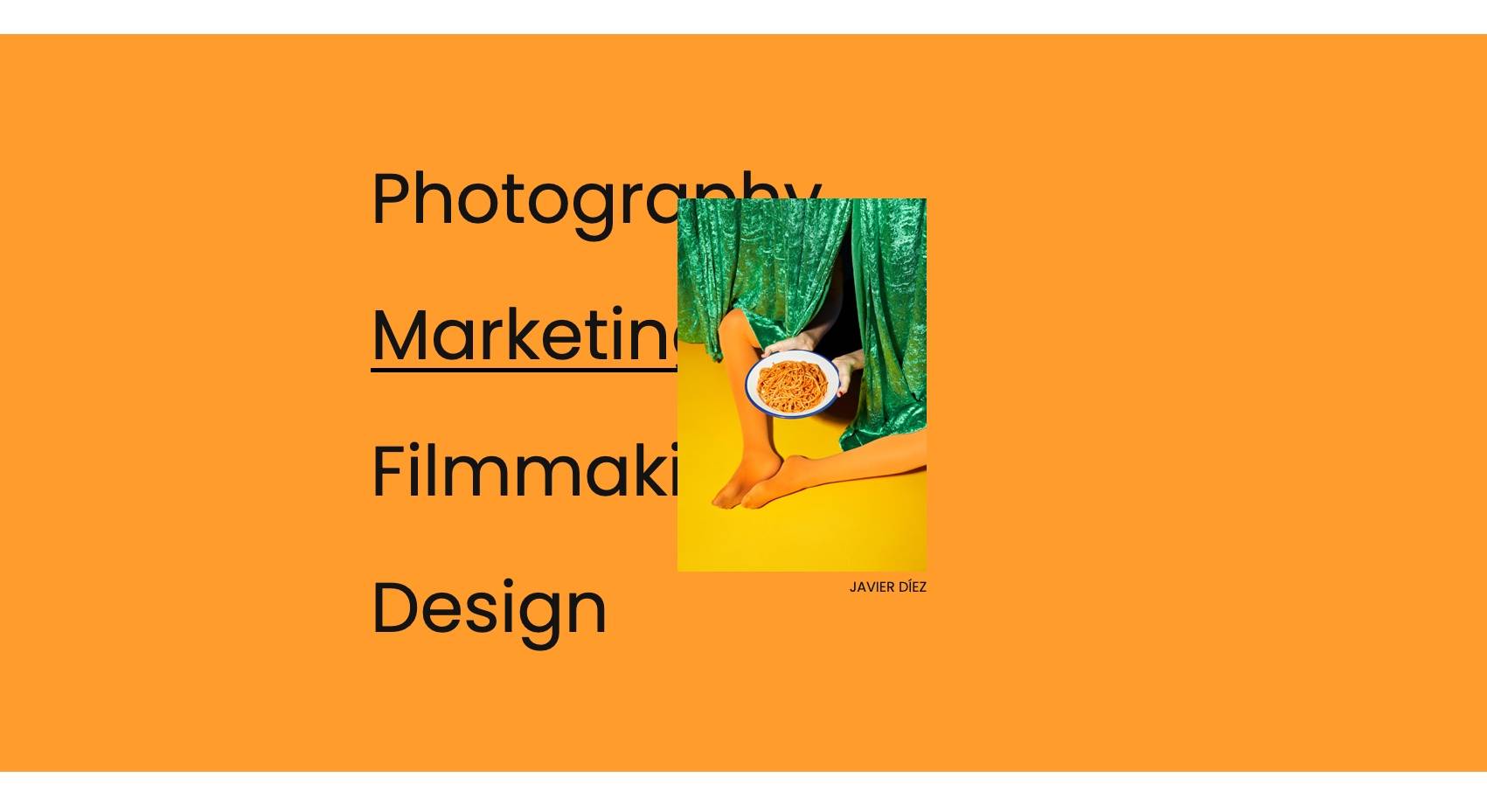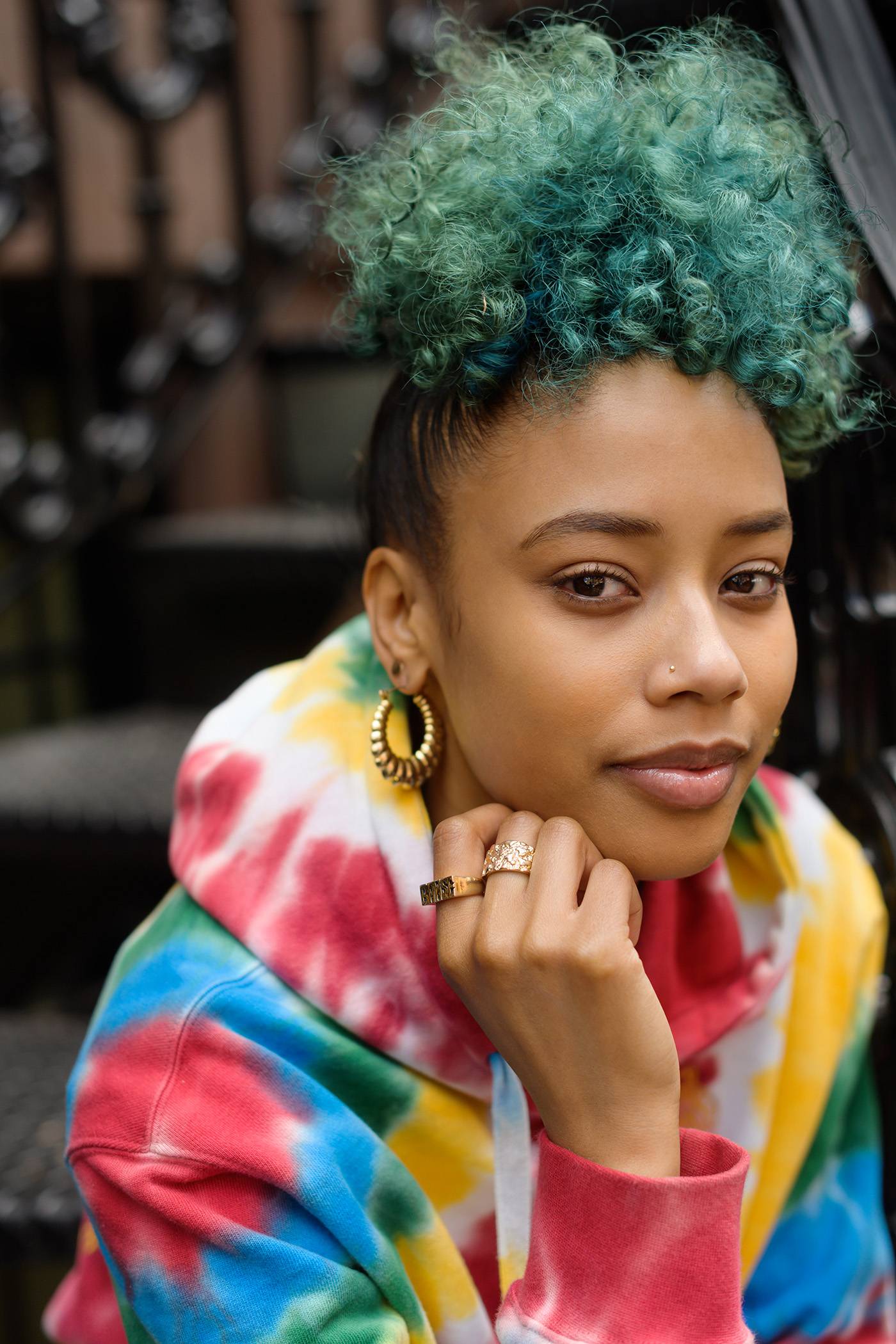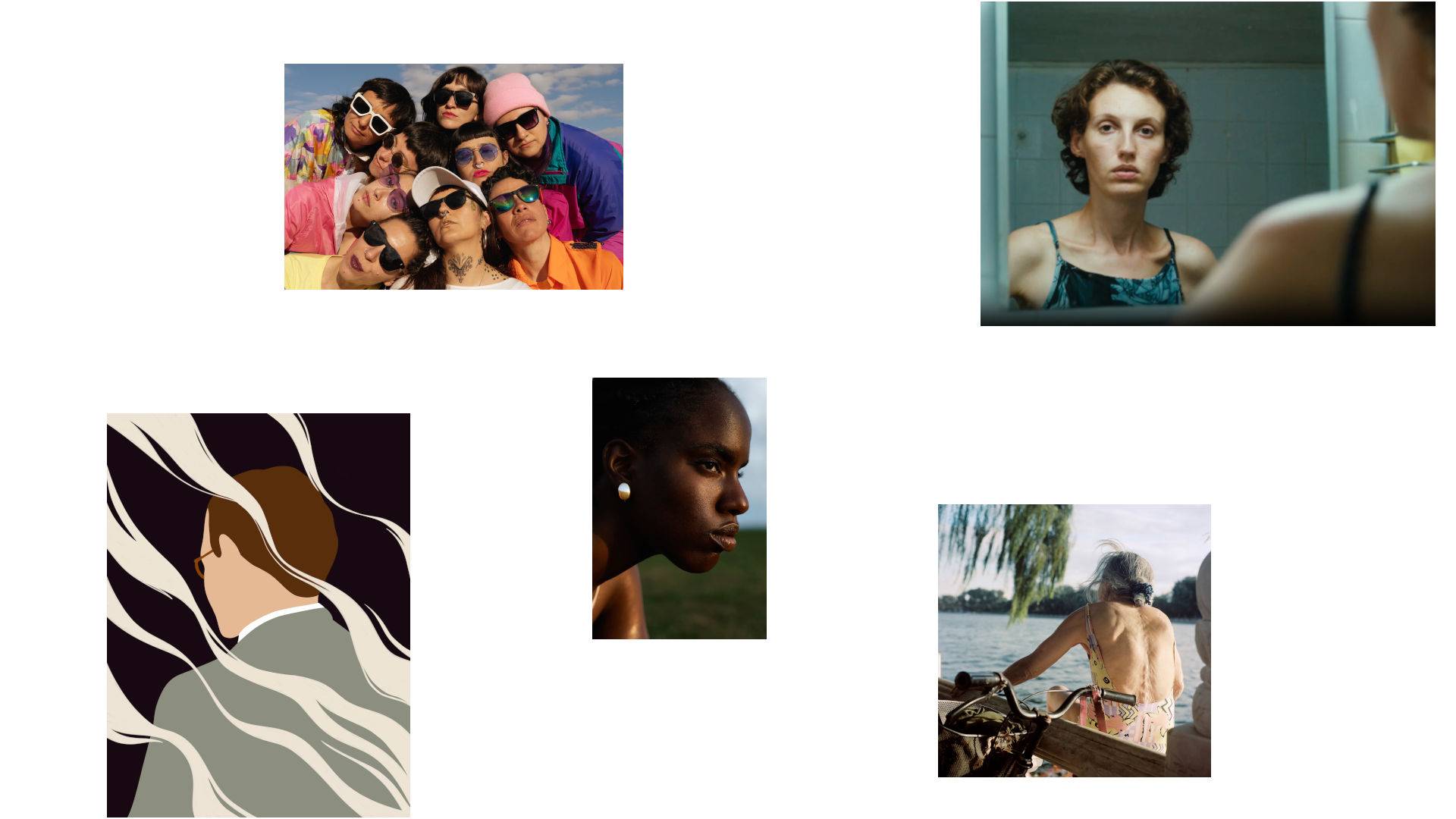What is stock media?
Most marketers working in digital or print have worked with stock media at some point in their careers. Stock media consists of several mediums under one umbrella. Stock media can take the form of visuals like photography, footage, illustration, and vector graphics or can be licensable audio like music and sound effects. All stock media assets are housed on central platforms where marketers and anyone from the public may pay a fee to license the content for use in their campaigns and projects. Licenses vary in usage, accessibility, and price depending on the need. Stock media shows up in work from small business blogs to giant billboards from Fortune 500 companies and even major motion pictures.
Why stock media is important for marketing
Stock media is an indispensable tool for Marketers in today’s digital landscape. Time is perhaps the most valuable commodity in marketing and advertising. Stock media solves for the dwindling resource of time by offering premium, editorial-like content without the weeks of preparation, shooting, and editing involved.
In addition to time, stock media saves marketers up to thousands of dollars in annual budgets by offering affordable b-roll, content for pitch decks, and key visuals for brand campaigns.
Consistency is paramount for building modern brands, and stock media has that in spades. Selecting stock visuals from the same shoot, with the same model across different environments, or from one artist with a specific style can give campaigns and branded content the consistency needed for brand recall and recognition.
The consistency stock media offers marketers also adds value by way of scalability. Having key visuals accessible at all times means that marketers can scale campaigns and efforts to increase reach, maximize conversions, and grow revenue without massive and risky investments.
The differing stock media licenses make it easier than ever for marketers to find the right content for their needs visually and legally. From royalty-free to rights managed to public domain, there are several options brands can opt for when developing strategies across marketing channels.
How stock media saves Marketers’ time
No need for custom shoots.
Custom editorial and commercial shoots are staples in marketing and brand campaigns, especially for larger brands. They allow for complete artistic control and direction to create a unique brand experience. They are, however, expensive and time-consuming. First, you’ll need to find the right team to execute the project, you will need to brief the team, scout a location, hire models, and involve several stakeholders for approvals along the way. Shoots can get caught up in red tape and often run longer than expected. Companies that are looking to be more progressive from a sustainability and carbon footprint lens will also often look to stock media to ensure they are being environmentally conscious. When you are working with tight deadlines, stock media offers quality content that can look just like a custom shoot without the price tag and drain on time. You can have a shoot ready for implementation and iteration into market literally in seconds.
Learn more about saving time with stock media.
Create mood boards from a curated collection
When you are concepting your brand and marketing campaigns, it’s helpful to have access to a library of inspirational visuals to guide your vision. A tightly curated and high-quality stock media platform like Stocksy not only offers premium content to license but also a treasure trove of inspiration to create galleries off imagery that you can then use in your projects. Create dynamic and inspiring mood boards from curated collections to save time scouring the internet for the right imagery. Then easily purchase those stock media assets when you are ready to go to market with your project.
Plan in advance
Custom shoots require advanced planning and often only solve for case-by-case campaigns. Stock media saves Marketers time by having evergreen content available at all times. This means that marketers can plan full social calendars, email drip campaigns, brand campaigns, and farther in advance. For example, planning a social calendar with visuals from Stocksy and scheduling with social management tools like Hootsuite means your social media team can set and forget months worth of content and focus more time on expanding brand reach and engaging in time-sensitive conversations.
Search curated libraries
Tightly curated collections mean you don’t have to search through endless pages of fluff and filler content to get to the stock media that you need.
How stock media saves Marketers’ budgets
If a picture is worth a thousand words and a video is worth a thousand pictures, that’s a lot of content. Imagine what it would cost to buy 1000 pictures from a custom shoot. Custom content is a valuable resource and has its time and place for those projects that need an ultra-specific spin. However, the costs incurred from hiring a team, scouting a location, renting studio space and equipment, hiring models, purchasing wardrobe, and buying or renting props can skyrocket the budget pretty quickly.
Stock media can look and feel like a custom shoot, giving your marketing campaign a unique and high-quality look without the hefty price tag. Marketers can license stock photos, videos, and illustrations for as little $15 USD per asset. And with the added Stocksy features like “From this Model” and “From this shoot”, it’s easier than ever to build out cohesive campaigns across all channels that look (but don’t cost) like a million bucks.
How to use stock photography for marketing
Stock photography is used in all marketing channels at all stages of the funnel – brand awareness, consideration, and lead generation. A customer journey rarely runs from start to finish without encountering some stock photography along the way. Different kinds of stock photography can be used in various applications, but it’s valuable to know what kinds of stock photography are available and how to use them best.
Conceptual stock photography
Often in marketing campaigns, blogs, and standalone social media posts, a single image must communicate an entire concept or idea. Sometimes this can be easily executed with an image that expresses a mood or emotion you are trying to convey. Other times, the stock photo can do some heavy lifting, communicating complex themes and concepts that require a more open arena for interpretation. Conceptual photography can express your message with suggestive imagery, colors, moods, and combinations of elements that help your customer understand your intent.
Click here for some of our favourite conceptual imagery in our collection.
Lifestyle stock photography
Lifestyle photography is a genre of photography that captures people in real-life situations, often telling a narrative story. Family functions, friendships, couples in love, adventures out on the road, traveling, day-to-day activities — these all fall under the umbrella of lifestyle stock photography.
In today’s market, authenticity is king, and quality lifestyle stock photography can help your brand forge an authentic connection with your audience if done right. Look for relatability and realistic expressions to achieve an authentic lifestyle stock photo look. Avoid overly emphatic expressions that can come off as performative. Marketers once upon a time used the only stock photography available, which was staged, theatrical, and unconvincing fluff. In today’s stock industry, premium agencies like Stocksy only accept lifestyle content that communicates genuine moments and realistic environments. Tell a story with lifestyle stock media to create connection with your audiences.
Click here for some of our favorite lifestyle video in the collection.
UGC stock content
The overly-perfected world manufactured by Instagram has had its day. Audiences are no longer as interested in staged and polished lifestyle imagery. Today’s consumer wants to see the nitty gritty, raw realism of the everyday. This aesthetic shift has given rise to more user-generated content being implemented into content marketing, branding, and advertising. This has translated into stock photography by photographers capturing more selfies and personal content, but UGC-style content also shows up in stock libraries as more candid, imperfect, and intentionally messy content. This is different from accidental shots or amateur photography. A level of skill is required to capture a UGC-style stock photo that still retains the quality needed for a household brand campaign.
Look for things like a slight blur, real laughter, a pleasing level of disorder, and generally the in-between moments that traditional lifestyle stock photography skips over. For example, if your campaign is about running, look for content that shows the runner checking themselves out in the mirror before leaving, or readjusting their ponytail that has come loose, or sending a progress check in to their running friends, the triumphant and exhausted selfie complete with sweat stains and flushed cheeks. Keep the messy bits of real life for something truly contemporary in stock photography storytelling. Click here for some of our favorite UGC content in our collection.
Studio shoots
As mentioned above, UGC content is having a moment, but that doesn’t mean that high-production studio stock photography is taking a back seat. Studio shoots are essential for marketing campaigns that require a clean aesthetic or an eye-catching pop of color contrast.
Studio portraits communicate a level of sophistication and professionalism that is necessary for some audiences and applications. They can be set against varying color backdrops to add drama and align with your brand colors.
Studio stock photography can also go a long way to showcase products and elements needed for more commercial-style campaigns. Beauty, self-care, medical, and food product photography are some of the more popular studio photography content types used by marketers.
Landscape and nature stock photography
Digital backgrounds can set the entire mood or tone of a website, page spread, or landing page. They can be the difference between converting a customer or bouncing them. Choosing the right background can seem like an afterthought, but for marketers, it can have the most impact on the success of a campaign. That’s why it’s so important to have access to landscape and nature photography that can communicate your brand’s intention without drawing too much attention to it. Landscapes can evoke peacefulness or stress depending on the color balance, copy space, and distance. Find the right balance between what you need to say with copy and what the image is saying on its own. They should complement one another rather than fight for dominance over the consumer’s attention.
How to use stock video in your marketing projects
Stock video footage is a solution for many marketers looking to execute their content needs while providing a narrative and authentic experience their audiences want. According to Hubspot’s 2022 marketing report, 93% of brands acquired customers from videos posted on their social media, and over half of marketers say that video is the content type with the best ROI. Video was also the top investment for B2B brands in 2022. With such a heavy focus on video, marketers now more than ever need access to affordable, unique, quality, and eye-catching stock videos that meet their brand needs and values.
Use narrative stock footage
Like lifestyle stock photography, narrative video tells a story to strengthen your marketing message or ad campaign theme. Narrative videos can evoke an emotional response in just a few seconds that would require several photos or paragraphs of text. Narrative videos can take your audience on a journey and communicate your point of view almost instantaneously, strengthening brand salience, recognition, and loyalty. In this world of grasping for short attention spans, this instantaneous communication is key for successful ad campaigns.
Narrative video can be authentic and raw, like a UGC clip, or it can be high production style, emulating the look and feel of a cinematic film. Depending on the campaign, the tone of the stock footage can be selected to match the overall impression you wish to convey to your audience to sell your product or service.
See how the below footage from Milles Studio knits together to tell a story about a young family sharing a weekend of simple adventures and togetherness. Any one of these clips can be licensed and integrated into your marketing campaign.
Stock video backgrounds and textures add intrigue
Movement on a website or in the backdrop of a presentation can create drama, add depth and catch an audience’s attention quicker than a photo in some cases. Stock video backgrounds with ample negative space appeal to our desire to wander and explore. During a stressful work day, a glimpse at a beautiful landscape can offer a temporary escape, almost as if we were there ourselves. They can be conceptual or realistic, incorporate brand colors or communicate a tone that matches your marketing campaign. Whatever the need, stock video backgrounds are a valuable tool in any marketer’s kit.
Apply effects to your stock footage
Once you’ve purchased the license for your stock video asset, you can apply all sorts of effects and elements to transform the stock footage into something unique. Adding voiceovers is an easy way to draw attention to elements of the video you want to highlight while conveying your message. Text on screen can act as a standalone element added to a stock video clip or can be combined with a voiceover to add emphasis to keywords and campaign highlights. Music, whether custom-made or licensed from a stock library, can be layered onto a stock video clip to create a more dynamic audio experience, compounding the mood you wish to convey. And color effects or color grading can align the video clip with your brand colors, tour campaign colors, or communicate a specific vibe. This is why buying ungraded stock video clips can be so invaluable to marketers developing advertisements, commercials, and campaigns that require a cohesive look and feel.
Tools for editing stock video
There are several tools available to augment and edit your stock video clips. Some of the most user-friendly software with a shorter learning curve are good options for marketers who are short on design and video resources and need to take video editing into their own hands.
Media encoder is a simple tool from Adobe that can be used to compress and resize videos that are too long or large and change the file format. You can create custom settings or use their handy presents to upload your video clip and easily compress it to common social media and other platform-specific sizes and formats. Trimming the clip down in length is also a breeze, so your YouTube preroll is nice and tight (we know what it’s like trying to get everything your marketing director wants to get across in 5 seconds).
Davinci Resolve is a great tool if your goal is to get into more advanced editing work. Color grading, color correction, visual effects, and audio post-production are all possible with Davinci resolve on Macs and PCs. Resolve really shines when working with color grading and can take your editing to the next level of professionalism.
Adobe Premiere Pro is similar to Davinci resolve in that it is your one-stop shop for non-linear editing, color grading, and adding animated titles and visual effects to your clips. You can master an entire video with this one tool.
If you’re feeling spicy and like you want to get deep into motion graphics, first off, don’t. Hire a motion graphics expert. But, if you are a marketer with a penchant for punishment, you can give Adobe After Effects a go. The learning curve is steep, but the capabilities and options for motion graphics are more advanced than Premiere Pro and can give your marketing campaign that extra bit of panache.
Learn more about how to improve your video content marketing here.
How to use stock illustrations in marketing
As markets get saturated by every type of visual media imaginable, a growing number of marketers are using stock illustrations to stand out from the crowd. Stock illustration can cut through the noise of photos and videos when used effectively.
Similar to conceptual stock photography, stock illustrations can convey a concept or theme without the need for too much accompanying copy or voiceovers to get the message across. Unlike stock photography, however, stock illustrations are not bound by the natural world and its pesky laws. Illustrations can be as realistic or surreal as they want to be. You can draw up almost anything you can imagine, and this can really come in handy when your message is in need of visual content that can quickly communicate your meaning. Search illustrations on Stocksy here.
3D-graphic stock illustrations are trending in the advertising space and give a feeling of Y2K nostalgia while offering a more modern sophistication that is popular with audiences. They can communicate a fun and positive message when combined with light-hearted content or can ease the harshness of a heavier campaign.
Flat or minimal 2D illustrations can convey a sense of comfort and nostalgia reminiscent of picture books, paintings, and greeting cards. These simpler illustrations can grab your audience by countering the fast-paced and loud visual media filling most feeds and ad blocks and instead playing on a softer illustrative approach that relaxes the eye and mind while still offering color and playfulness.
Creating dynamic emails with stock media
Email marketing still has the highest return on investment for small businesses.
When setting up triggered emails, drip campaigns, transactional emails, and bespoke newsletters, the visual experience is paramount to get readers to click through and convert. An email with too much text and not enough visual intrigue is often enough to make a user unsubscribe or bounce. Adding dynamic imagery is the first step, but to achieve brand recognition and make your emails read as an intentional brand marketing piece, the visuals need to work together. This is where stock media is invaluable.
When developing drip campaigns, each email is a part of the customer journey — one precedes the other, and the customer learns what to expect next. If your emails in a drip campaign are disjointed and unrelated, you may risk confusing the customer and lose them along the way. Stock media platforms like Stocksy offer curated collections that look and feel similar in a variety of ways so that you can design a whole drip campaign with a cohesive on-brand visual kit in just minutes.
When it’s time to send out your weekly or monthly newsletter, you can use previous images from other emails to reverse image search or choose images from the same artist that have elements you want to keep consistent across visual communications in all channels.
Whether your header image, in-email gifs, or background illustrations, stock media is a crucial tool for email marketing for small, medium, and large businesses.

Stock media for social media
Social media can increase the traffic your website receives, and it’s an essential sales tool. Creating a social media content plan requires a strategic calendar that incorporates several different mediums from infographics to e-books, videos, blog posts, and current events commentary. Planning out your social media calendar will call for visuals and captions that can future-proof your business and help keep you organized.
Once you have learned about your audience, set your goals, conducted a competitive analysis, and gathered your current content, it’s time to make a content plan. You likely have some brand elements and pieces that can be used and repurposed for social media but you will need to create net new content to posts consistently and often enough to feed the algorithms and get seen and form long-lasting relationships with customers.
Stock media is an incredibly useful tool for developing and producing high-performing content that provides value for your customers. Creating content is time-consuming, expensive, and competitive. To solve this, brands rely on posting several different media types to diversify content and create a more engaging user experience.

Types of stock content to post on social media
1. Written posts, blogs, articles, guides, and more
Blogs and written content are alive and well. Although most readers have learned to skim and speedread, long-form content remains a key performer so long as it provides meaning, value, and visuals. Today’s consumer relies on visual cues peppered throughout their digital content to reinforce arguments, get points across quicker, and liven up a page. Stock media is used throughout blog posts and as the hero or header image used for amplification. The thumbnail image you use for your written marketing content can make the difference between a click and a pass. Stock media is an affordable and time-sensitive tool for posting on-brand visuals to speak for your written content in social media feeds.
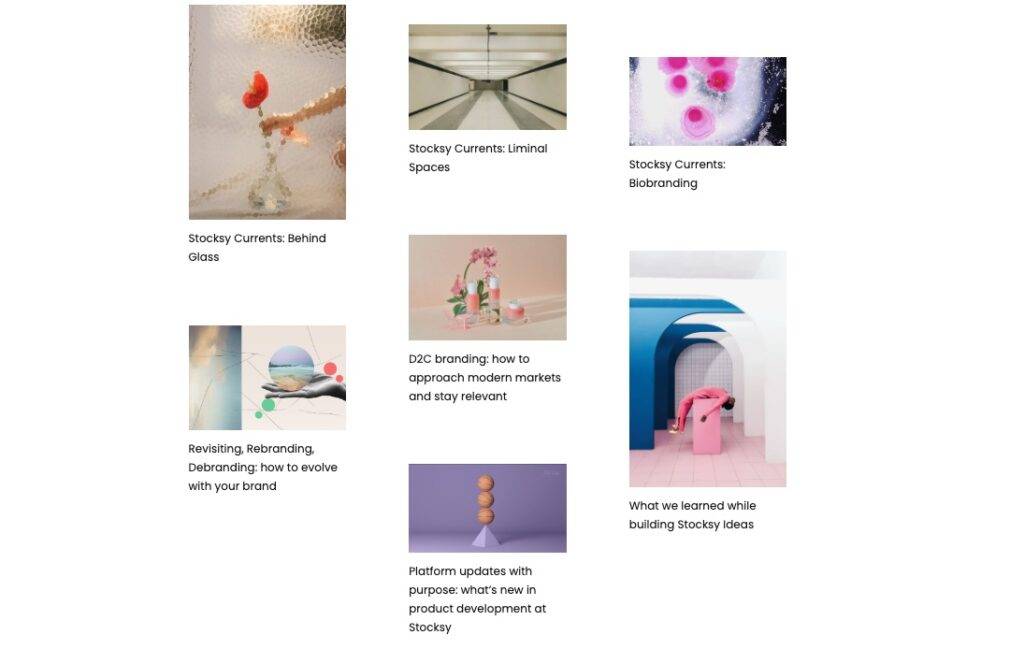
2. Images
Posting images on social platforms, especially visual ones like Instagram and Pinterest, is imperative for a solid social calendar, but the competition is fierce. You can create your own photo content, but the disadvantage to posting amateur photos is that they can get lost in the sea of competition and make your brand forgettable. Stock media is an accessible way to access professional photos that tell stories and catch attention and stop the scroll without having to invest in expensive camera gear or hire a professional photographer every month.
Videos
Stock videos are a dream come true for social media content calendars. Coming in several lengths and resolutions, stock videos are optimized for the short, digestible, yet quality content that modern audiences want. The optimal length for a social media video is between 15-30 seconds, and stock video clips most often range between 10-20 seconds. Whether you need 4k or 720p quality, a single stock footage platform can provide your year of social media video needs.
4. Infographics
Visuals that support explanations, statistics, and written concepts can be valuable tools for conveying complex information in a digestible format. Infographics often incorporate icons and graphs as well as illustrations to personalize and make the infographic more dynamic and engaging. Stock illustrations can liven your infographic and create consistency across several pieces of collateral. For example, if you are creating an infographic on how to sail a boat, adding stock illustrations of boats will really help to get that point across. And if you have several infographics about different aspects of sailing boats, choosing illustrations from the same stock media artist can lend consistency to better brand salience to your social media posts.
How to use stock media for digital advertising
Like organic social media, running digital ads need to have visuals that grab attention, cut through the noise, and entice audiences to engage with your content. Across social channels, photo and imagery posts are the most-used content type to increase audience engagement. Dynamic ads boost ROI significantly so whether Meta carousels, Instagram Stories, YouTube Preroll, or Google display, your digital ads should be dynamic and reflect your goals for each channel depending on your audience. This is where stock media comes in handy — access millions of stock media assets that are legally vetted and ready to develop varying visual iterations of your marketing campaigns. A/B test with ease and leverage the visuals that perform
How to use stock media for print
Just because stock media platforms are digital doesn’t mean that they aren’t great for print work. Posters, book covers, magazine ads, business cards, bus station ads, and giant billboards all use stock media. In fact, ad recall is 2.6 times higher when an ad is in print than when it is digital. The keys to creating a dynamic print ad are to watch for trends, keep your canopy concise, and be bold. Using the color search and copy space filters on the Stocksy platform can help to find an image that pops in your campaign colors and leaves the audience with enough space to absorb your message – and remember you!
Print often requires a specific license depending on the use case and how many copies will be printed. Click here to learn more about extended licenses for unlimited print.
Stock media for building your brand
How to use stock media for brand campaigns
Brand campaigns can take a number of different shapes and sizes depending on your product, company, and goals. Micro campaigns can be limited to one social channel and run for as short a period of time as 2 days. Macro campaigns, on the other hand, touch multiple channels, can affect all stages of the marketing funnel, and can stretch over months at a time. The one thing they have in common is consistency and visual cohesion.
How does an audience know who you are, what you’re selling, and what your message is? How do you build recollection and relationships with your audience? Through reiteration and clever ways of reinforcing your brand campaign with visual elements that tie everything together. Today’s consumer is visual, and they rely on visual cues and frequency of those visual cues to receive the information they need about products and services. Stock media libraries hold countless options for selecting on-brand series, shoots, and curated galleries that center on a specific theme or concept. Access several images at different angles, in varying environments, and with alternating models that a shot in a narrative sequence. Apply those narratives to your brand campaign, and the bulk of the work is done for you. No custom shoot necessary. Check out how we used Stocksy assets for our brand campaigns: Pride: Beyond the Visible Spectrum, Women’s History Month, Small Business Month.
How Stocksy features help create cohesive brand campaigns
There are several Stocksy tools that make selecting visuals for your campaign much easier and can offer inspiration along the way.
More from this model feature
When executing your marketing campaign, your collateral may call for a campaign story that appeals to your audience on a personal level. Perhaps you want people to connect to your campaign in a way that it mirrors their life experiences. Stocksy’s “From this Model” feature helps you achieve your campaign goals by offering a quick and intuitive way to discover multiple shoots with the same model. This gives you the flexibility to showcase an individual’s story across radically different environments and situations with wardrobe and prop variability, minus the cost of setting up several shoots in different locations with separate creative briefs for each shoot. For the same price as any other asset selection, you can build out a marketing campaign that centers around a single model’s journey.
For example, you may be planning a marketing campaign about taking time for things that matter in your everyday. Your campaign story calls for stock photos of a woman going through a day at work, then to the gym, and later attending a picnic with friends. Use the “From this Model” feature, and you can have pages of suitable content available in seconds. You can even return results containing more than one of the same models.
To find more from this model feature, simply find the asset with the model you’re looking for and scroll down the page until you see the carousel of similar assets. If there are more photos and videos with that model shot in different locations, a more from this model button will show up. If there’s no button, try another similar model until you find a number of assets suitable for your campaign.
More from this shoot tool
Often, when briefing a marketing campaign, the direction will call for visuals that look similar but are shot from different angles, camera distance, and aspect ratios. A storyboard and mockups will often show a minimum number of variations on the same brand colors, environment, and styling required to provide stock photo collateral for all channels involved in a marketing campaign. Stocksy’s “From This Shoot” feature saves both enterprise and small business clients time and money by offering narrative, high-quality stock photo and video shoots with several assets often spanning several pages. “From This Shoot” gives you the flexibility to choose between subtle changes in angle, lighting, expression, and tone, so your marketing campaign fits your brand vision perfectly.
To find the “From This Shoot” feature, select the photo or video of choice and scroll down to find the From This Shoot carousel. Scroll horizontally to get a quick peak or click the “From This Shoot” button to see all the stock photos and videos in the series.
Visually similar search tool
Sometimes, when you are developing a brand campaign, you see the exact photo you need to run your social media ads. It’s the right color, the lighting, the subject matter, it’s perfect. But your perfect campaign picture is a photo from the internet and is definitely not for sale. If you can save a copy of the image, you may still be in luck. Visually similar is a Stocksy tool, similar to reverse image search, that allows you to upload any image you collect while scouring the internet and will return 200 visually similar images available for licensing. You can even use images from other stock libraries that are close but not quite hitting the mark to upload to Stocksy’s visual search and find the stock photo of your dreams.
To try Visual Search, simply go to stocksy.com, click on the camera plus icon in the search bar and drop your reference image into the dropzone that pops up on your screen. That’s it that’s all. Watch the options unfold before your eyes for tonnes of campaign-ready images.

Conceptually similar
If you’ve tried Visually Similar, you gotta try Conceptually Similar. They are not the same thing! While Visually Similar returns stock photos and videos that look like your reference image, Conceptually Similar can detect the mood, vibe, or feel of your reference image and offer alternative options that fit your concept.
Tone is an essential brand element of campaigns. If your campaign is about seasonal depression disorder and you upload a reference image of a person wearing all black tones feeling sad, it’s not especially helpful if your visually similar results are of people dressed in black having a great time at a party. The angle may be right, but the tone is way off. Conceptually Similar solves for this vibe shift by detecting the concepts and overall themes rather than a literal visual interpretation.
To try out Conceptually Similar, scroll down from the details page of the asset you’ve chosen until you pass the “From This Shoot” carousel, and you will see all of your Conceptually Similar results. *Hint — keep scrolling, and you’ll get Visually Similar results too!
Search by color
If there’s one element that ties a brand campaign together quickly and signals recognition in an audience, it’s color. A single color can lend a cohesive and tightened look to a multi-channel, full-funnel campaign by weaving it through typography, visual effects, backgrounds, and photos. So when you have a color palette selected for your brand campaign, it can be a pain entering “fuchsia pink” into a stock library search bar to find the right photo, video, or illustration. Add in the keywords associated with your campaign visuals, and your results are going to be significantly reduced. The process of finding assets in your brand campaign colors can be time-consuming and frustrating. But with Stocksy’s search by color tool, searching for stock media assets is actually a fun respite. You can search by color on Stocksy in three ways:
- Search by hex code to return color-specific results that fit perfectly with your campaign visuals. Scroll through all the results and get inspired by the stock photo and video options closest to your campaign palette.
- Use the color slider if you have more flexibility in your brand campaign colors and you’re looking for assets in a broader total range.
- Search by keyword and use the color filter to refine your specific photo, video, or illustration needs so they match your brand campaign colors.
Curated Collections
If your brand campaign centers around a specific holiday, season, observance, or theme, have we got a treat for you. Curated Collections are galleries of 100+ stock photos, illustrations, and videos grouped into one central location. These collections are hand-curated, meaning that Stocksy’s teams of editors, designers, and trend forecasters scour the Stocksy library to select the stock media assets that best communicate the theme at hand. Their knowledge of trends, aesthetics and modern marketing makes these collections super valuable for finding several campaign-perfect assets in one click. Need a UGC-style collection of business stock photos that communicates contemporary office culture in an authentic way? No problem – try the Raw Cuts: Business edition collection. Looking for something to illustrate your brand’s commitment to sustainability? Give “Less is More” a go.
Browse all Curated Collections here.

How Marketers can use stock media to re-brand
Undergoing the process of rebranding is a big commitment and a very exciting time in a business’ timeline. A rebrand can breathe new life into a product, reinvigorate values, and help a company or organization stay relevant and stand out from competitors. Change is good. But change can be very expensive and daunting. Luckily stock media libraries are treasure troves for rebranding inspiration. Stock media collections are constantly being added to with new and relevant content to choose from so your brand stays contemporary and on-trend.
Look for stock images that align with your brand’s new visual identity and communicate the values you are trying to convey. Use tools like From This Model, From This Shoot, Visually and Conceptually similar to discover collections of associated stock photos, videos, and illustrations to save time.
How can marketers keep up to date on current visual trends?
Check out what the best talent is creating
One of the most effective ways to keep a finger on the pulse of visual trends is to see what the world’s top artists are creating. Stocksy receives thousands of applications every month, and only accepts contributors that bring new life to the collection and solve for collection needs. Stocksy also directly recruits photographers, illustrators, and videographers with style and creativity that keeps the collection relevant. Visiting the Stocksy site regularly and checking out what is new helps Marketers to get the freshest content first and to pull visual trends from the latest content uploads. Marketers can access the latest stock photos, videos, and illustrations by checking the latest feed or by following artists.
To access the latest feed, visit stocksy.com, click the magnifying glass in the search bar, and you will be directed to the first page of the entire Stocksy collection. The default sort order is set to relevance. Click this sort order in the top right corner of your screen and select Latest from the drop-down menu. Finally, select either photo, video, illustration, or all of them, and voila! Pages of the latest uploads from some of the best global creative talent is readily available to view and license.
Following artists is another great way to stay up on visual trends while getting first dibs on new stock content. If you find a Stocksy artist who inspires you or whose style fits with your brand, click through to the artist’s profile page and press the +follow button. Every artist you follow will show up in your following tab. Checking here frequently is an easy way to access current content and stay up on what the creative elite are cooking up.
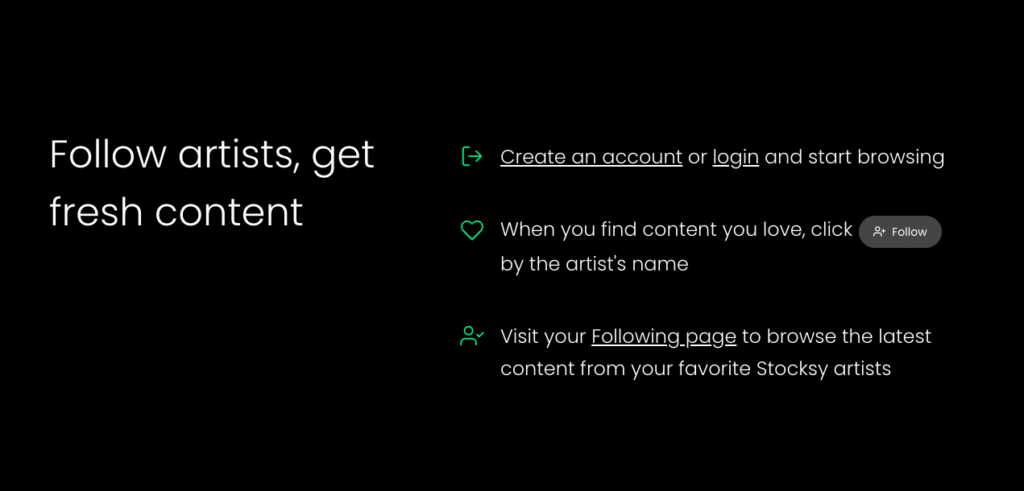
Check out the Currents section of the Stocksy Homepage
Stocksy content, design, and marketing teams are always collaborating and sharing knowledge of visual and cultural trends to inform all of our channels. Servicing marketers and advertisers well means that we have to be plugged into current events, collecting, compiling, and interpreting data to anticipate what’s next. This dedication to providing the most contemporary and future-thinking content shows up on several channels, including social media, the blog, and our website.
Tap into what’s currently trending or coming soon by scrolling down on the Stocksy homepage to the Currents section. There you will find a weekly rotation of 40 painstakingly curated stock photo, video, and illustration assets that tie in a specific theme, idea, color palette, or concept that reflects the content marketers need most to stay up to date.
Subscribe to and read our blog – Stocksy Ideas
As curators of progress, it’s our business at Stocksy to grow with culture and share what we learn. The Stocksy blog is aptly named Ideas because it’s chock full of insights and inspiration to generate new and exciting ideas. All of the content on Stocksy Ideas is derived from data, agreed-upon values, and rules, not vibes and opinions.
Visit Stocksy Ideas to access stories about progressive marketing and branding, visual media best practices, design inspiration, creative trends, and more. Stay ahead with the most current creative trends and design resources from a curated, progressive collection of stock photo, video, and illustration. Create meaningful marketing work. Discover new IDEAS here.
Follow Stocksy on social media
Social media can offer a seemingly endless supply of inspiration and content. But that can also work against marketers looking to cut the fat and only engage with reputable sources. Following Stocksy on our social channels: LinkedIn, Facebook, Instagram, Pinterest, Twitter, and TikTok is a great place to start. Each of these channels provides unique insights into visual media trends that will help you create contemporary brand campaigns and win new clients. Look out for specific series to hone on on trending content:
Currents is a series released monthly by the Marketing & Design team. Backed by rigorous research, insider info, and plenty of data, Currents reflects on subculture and mainstream trends ramping up in the design, communications, and visual creative space. Check in for the latest edition each month.
Color palettes are released monthly, offering seasonal, topical, and trending color combinations informed by everything from fashion to nature to politics. Whatever is happening in the world, we have a color palette to reflect current events and give you a leg up on developing cohesive, color-specific marketing campaigns.
Fresh Selects are collections curated by Stocksy editors and content specialists that center around a specific theme or concept. Based on search data, buying behavior, and trend forecasting, these stock media collections of photos, videos, and illustrations are every marketer’s window into the content everyone is about to want for their projects.
How Marketers can create representational work
Ensuring accurate representation is an integral part of any marketer’s job today. The growing discourse surrounding inequality is more intersectional in the mainstream, and brands with their finger on the pulse recognize that accurate representation and increased diversity, equity, and inclusion are crucial for modern product development, marketing, and communication.
The inception of stock media began with primarily cis, hetero, able-bodied, caucasian creators and entrepreneurs. The collections built reflected this cultural homogeneity, with most stock photos being captured and presented from a one-sided lens. In the past few years, specifically, the issues that came with stock media showcasing a normative baseline for the human experience have made themselves apparent. Stock media has the power to shape perceptions of the self and others as it populates the visuals that surround us every day.
Today’s consumer is aware of the inequalities and missteps of the past and demands that the media show an accurate representation of what the world really looks like. Better discourse around capturing imagery of people of color, queer communities, people with disabilities, seniors, people with curves and other underrepresented people in the world is simply a must.
Stock libraries are evolving with this awareness and are working to showcase more visual media of diverse people created by diverse people.
Eliminate clichés and media stereotypes
When reaching for content that represents and celebrates more diverse people, it is important to be wary of some of the pitfalls that can occur. Several cliches still exist in stock media libraries, so be careful of choosing imagery that is overtly voyeuristic or relies on old stereotypes. Stereotyping is still an acute problem in marketing through stock images. Not only is it offensive to the subjects, but it diminishes the individual into a piece of inauthentic marketing material. More often than not, it’s caused by ignorance or time pressures. When purchasing stock images, take time to conduct appropriate research and educate yourself on the subject you are looking to represent. Showing reverence towards and understanding of cultures will ensure that the campaign is authentic and representative of the audience.
Use facets and filters to discover diverse content
When searching for photos and footage of people, Stocksy’s search filters help you find diverse content by isolating the parameters you need to execute a representational marketing campaign. For example, if you are searching for stock media of smiling people, first return your results and then turn to the filters on the left of the page. From there, you can select age to include seniors, ethnicity to showcase cultural diversity, and gender filters to help balance identities shown in your projects.
Was this post not thorough enough? Did we miss something? If you have questions about modern marketing practices with stock media, feel free to drop us a line at [email protected]. We can talk about this stuff all day.









